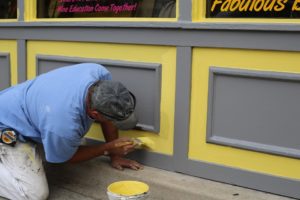What is Paint Blocking?
Paint blocking is a problem often seen by painters and builders. It occurs when a coat of new paint is painted over another area that has just been painted. When the paint of both pieces dry, they stick together. This can be a potential issue if, for example, a newly painted jamb gets stuck onto a door. Though using low-quality paints can be more cost effective, in the long-term, this can pose a problem. Glossy paints based in enamel offer a higher gloss or shine, but are more likely to peel or block after a certain period of time.
Furthermore, not allowing sufficient time for the paint to dry can also lead to blocking, due to the warmer humidity. As it is, more quality oil-based paints can be more effective than low-quality, if a higher gloss finish is desired.
There are a few ways to ensure that blocking does not occur after painting. Using a glossy acrylic paint is one of the ways to ensure a high gloss look while being environmentally-friendly. As the acrylic paint dries faster, due to its latex composure, it is better able to develop better block resistance in comparison to other vinyl or oil-based paints. For a higher gloss finish and a better resistance to blocking, try using an acrylic-based paint and allow for a longer period of drying with plenty of time for the surfaces to dry and prevent unwanted sticking or cracking later on.
One of the issues of using fresh paints is the tendency for two surfaces to stick together; also known as blocking. This can be a potential issue if, for example, a newly painted jamb gets stuck onto a door.
